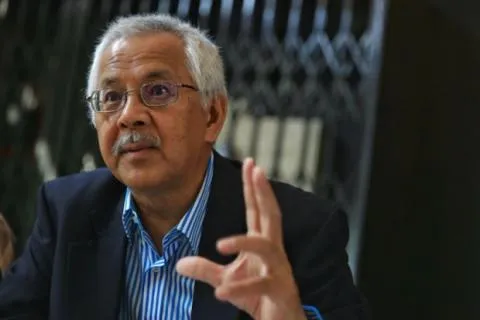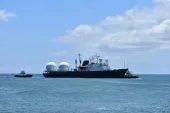
Malaysia's first nuclear unit in 2021 is no longer possible: Dr Mohd Zamzam Jaafar
Find out why the first CEO of Malaysia’s Nuclear Energy Programme Implementing Organisation believes this and what Malaysia is doing about it.
In January of 2011, two months before the paradigm-shifting Fukushima incident, Malaysia, ASEAN’s third richest nation, and third largest economy, took the bold step in the “go nuclear” route to establish its state-backed nuclear energy organisation, NEPIO (Nuclear Energy Programme Implementing Organisation. Dr Zamzam Jaafar, one of the nation’s leading energy experts, who already boasted a greater than three decade career at the Tenaga Nasional Berhad (the national power utility), was asked to take the reigns as NEPIO’s CEO. He was the obvious choice. Holding a PhD in nuclear engineering, Zamzam helmed the nuclear unit of the Malaysian power supplier long before NEPIO was conceived.
Everything was ahead of the fledgling organisation, including the problems that were about arrive, albeit vicariously, due to Fukushima. But NEPIO and Dr Zamzam have steered a steady course and Malaysia’s nuclear energy industry is prevailing. In his sixth year as CEO, Zamzam describes the Malaysian government’s commitment to its nuclear programme as “a long-haul assignment… but we have been working with the IAEA since we started, and before that too when I was head of the nuclear energy unit at Tenaga Nasional.”
Next big move
Zamzam labels both Vietnam and Bangladesh as the next movers and shakers in the Asian nuclear industry, with Bangladesh, interestingly, leading the way. Although if one considers Bangladesh in context, it is an obvious contender to go nuclear sooner rather than later, a massive, swelling, power hungry population inhabiting a relatively small land area, an under-developed economy but one which enjoys relatively stable government and has a middle-class on the precipice of exploding in size. “Last December Bangladesh signed a government-to-government contract with Russia, and the Bangladeshi nuclear authority issued a construction licence for 2017. I think the target is for the operation date of the first unit is 2023, and the second unit in 2024.”
In terms of ASEAN, Vietnam is the group’s lead contender, but the path to nuclear in the communist republic is not without its speed humps. “Among ASEAN member-states, we’ve seen Vietnam has decided to proceed with 4.10 projects but these are still works in progress because they have not inked the construction agreement. If I am not mistaken, the Vietnamese have pushed back their COD to 2027 or so. So I remain with the belief that the first country in the region to launch a plant will be our neighbour Bangladesh. Of course, India and Pakistan have their own nuclear power production and Iran too, although its only a fraction of total electricity generation. Next year we think that UAE will also have its first plant running.”
Malaysia’s own aspirations
While regional co-operation is bound to continue to the benefit of all nuclear newcomers in Asia, Malaysia (or more precisely the Malaysian Ministry of Energy, Green Technology and Water) has just taken the lead in chairing the development of a ASEAN nuclear energy cooperation body. “For our part,” says Zamzam, “We have already decided to proceed with what we call the IAEA Integrated Nuclear Infrastructure Review Mission, due for roll-out later this year.” Under this framework the International Atomic Energy Agency is set to provide some highly detailed analysis and follow-on advice based on the moved that have been made in ASEAN nuclear over the last five years. “We are hoping that the IAEA will provide us with counsel for proceeding with the programme, what we have done correctly, what we need to improve on, and so on.”
These are all positive and seemingly timely moves – many ASEAN jurisdictions are sending overtures that they are “ready”, nonetheless, Fukushima, or more accurately, the threat of another Fukushima on less nuclear-mature Equatorial shores, continues to raise its ugly head. Malaysia has announced some five years ago, that it would launch its first unit COD in 2021, however, according to Zamzam, the reality is that “this is no longer possible.”
The Malaysian Government is now targeting at least 2030, and with less than 15 years remaining before this extended deadline, one of the fundamental steps is to table a new nuclear economy energy Bill in Parliament, a vital part, according to Zamzam, of the national 11-measure plan. “Once this is tabled in Parliament, then we will proceed with the establishment of an independent mediator and effective authority.” Government is merely one stakeholder. NEPIO plans to quickly engage all stakeholders: professional groups, the general public, and even the schoolchildren, due to the fact that by 2030, top young scholars will form the human capital pool necessary for the newborn industry.
While there is no doubt that Malaysia is committed, a lot must occur before the nation’s first operational NPP opens its doors. Building the human capital pool and jumping through the legislative rings-of-fire aside, there is much else to consider, with public opinion coming on board being a major consideration. Zamzam intends to use the period up until 2020 to engage and win-over a typically suspicious public, but unlike Bangladesh, Malaysia is also yet to select a site – its western neighbour having done so over 50 years ago, “and in the case of Turkey, I believe they had their site identified around 1980,” he adds. “Malaysia doesn’t have a site at the moment, although we have some idea where the site could be.”
There are unique loopholes created by Malaysia’s federal system in that there is a power penultimate layer of stakeholder in terms of state government, that must be independently included and consulted – and may issue an independent veto - in irrespective of desire, policy or even pressure from KL. “Then of course we have to win over the local people around the site.” It seems there is much confronting Zamzam and his team of senior nuclear policy-makers and bureaucrats, however with a GDPPC of US$26,000.00 Malaysia is truly industrialising at a rate of knots, pressure to go nuclear out of necessity may bulldoze the roadblocks.
*With reports from Simon Hyett



















 Advertise
Advertise






